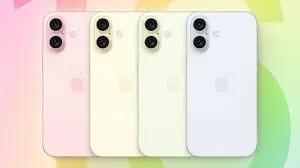The working of iOS operating system vs android operating system in 2024?
Introduction
In the ever-evolving world of mobile technology, iOS and Android stand tall as the titans of operating systems. As we step into 2024, these platforms continue to shape our digital experiences in unique ways. Each system has its devoted followers, boasting features that cater to different user preferences and needs.
iOS, designed exclusively for Apple devices, offers a seamless integration within its ecosystem. Meanwhile, Android provides unparalleled versatility across an extensive range of devices from various manufacturers. This rivalry fuels innovation and keeps users excited about what’s next.
Curious about how these two giants stack up against each other this year? Let’s dive deeper into their workings and explore the key differences that define your smartphone experience today!
Key Differences between IOS and Android
When comparing iOS and Android, the first difference that stands out is their design philosophy. iOS embraces a uniform interface across devices, ensuring a seamless experience for users. On the other hand, Android offers diverse customization options, allowing manufacturers to tweak the user interface.
Another critical factor is hardware compatibility. iOS runs exclusively on Apple devices like the iPhone and iPad, while Android supports countless brands such as Samsung, Google, and OnePlus. This variety results in differing experiences depending on device choice.
App ecosystems also diverge significantly. While both platforms boast millions of apps, developers often prioritize launching on one platform before others due to varying monetization strategies.
Software updates play a crucial role in how each operating system evolves over time. Apple provides timely updates across all its devices simultaneously; meanwhile, Android’s fragmented landscape can lead to delays based on manufacturer support.
App Availability and Compatibility
When it comes to app availability, both iOS and Android have their strengths. The Apple App Store boasts a curated selection of high-quality applications. Developers often launch new apps on this platform first due to its lucrative user base.
On the other hand, the Google Play Store offers an extensive range of apps that cater to diverse interests. Its open ecosystem allows for greater flexibility in app development, making it easier for smaller developers to bring their creations to life.
Compatibility is another major factor. iOS operates within a closed system which can limit options but ensures smooth performance across devices. Conversely, Android’s wide array of devices means users might encounter compatibility issues or subpar experiences with certain applications.
Whether you favor Apple’s polished offerings or Android’s vast library depends on your personal preferences and how you use your device each day.
User Interface and Customization Options
The user interface is a critical aspect of any operating system, shaping how users interact with their devices. iOS prides itself on offering a sleek and intuitive design. The minimalist approach makes navigation smooth, ensuring even new users can find their way around without much hassle.
On the flip side, Android provides an abundance of customization options. Users can tweak almost every element to match personal preferences—from widgets to launchers. This flexibility allows for greater individuality but may overwhelm those who prefer simplicity.
Both platforms have strengths in this area. While iOS sticks to a consistent aesthetic that enhances usability, Android embraces variety and personalization. It comes down to what each user values more: streamlined efficiency or creative freedom in device appearance and functionality.
Security Measures
When it comes to security, both iOS and Android take different approaches.
iOS relies on a closed ecosystem. Apple tightly controls app distribution through the App Store. This reduces the chances of malware infiltrating devices.
Android, being open-source, offers flexibility but at a cost. Users can install apps from third-party sources which increases vulnerability to harmful software.
Both platforms provide regular updates for their systems. iOS users often see these updates immediately upon release. Android updates may vary by manufacturer and carrier, leading to delays in critical patches.
Encryption is another strong point for both OSs. iOS encrypts data by default while many Android devices offer this feature as well—but not all do it out of the box.
Biometric authentication features are standard now too; face ID and fingerprint sensors enhance user safety across both ecosystems without compromising convenience.
Performance and Speed
When it comes to performance and speed, both iOS and Android have their unique strengths. iOS devices are known for their smooth operation. The integration of hardware and software is seamless, offering a consistently fast user experience.
On the other hand, Android’s performance can vary widely based on the manufacturer and device model. High-end models run incredibly smoothly, while budget options may lag behind.
Both operating systems receive regular updates that enhance speed and efficiency. Apple usually rolls out updates across all compatible devices simultaneously. In contrast, Android updates depend on manufacturers which can lead to delays.
Gaming on these platforms also shows distinct differences. iOS often optimizes games better due to its controlled environment, making them visually stunning with minimal lag. Meanwhile, high-performance Android devices provide impressive graphics but require fine-tuning for optimal results across various models.
Users’ experiences will largely depend on individual preferences and specific device capabilities.
Future Predictions for IOS and Android
The future of iOS and Android is set to be dynamic. Both platforms will continue evolving, catering to user demands for integrated experiences across devices.
iOS may lean further into seamless ecosystem cohesion. Expect enhancements in smart home integration and advanced features that connect users more deeply with their Apple devices.
On the other hand, Android’s open-source nature suggests even greater diversity. Custom ROMs can enhance performance, while manufacturers innovate unique user interfaces tailored to specific audiences.
Artificial intelligence will play a pivotal role for both operating systems. Personal assistants could become smarter, anticipating needs before they’re expressed, making daily tasks smoother.
Additionally, augmented reality applications are likely to gain traction on both platforms. The competition may ignite rapid advancements in AR capabilities that transform how we interact with our environment through our smartphones.
As these giants vie for market share and user loyalty, innovation will remain at the forefront of their strategies.
Conclusion
The ongoing rivalry between iOS and Android continues to shape the smartphone landscape as we move into 2024. Each operating system offers a unique approach, catering to different user preferences and needs.
With iOS providing a seamless experience tightly integrated with Apple’s ecosystem, users enjoy an intuitive interface and consistent updates. Meanwhile, Android’s flexibility allows for extensive customization options tailored to individual tastes.
App availability is another crucial aspect that keeps both platforms competitive. While Apple’s App Store tends to have stricter guidelines ensuring quality control, Google Play offers a broader range of applications due to its open nature. This difference impacts how users perceive app compatibility across devices.
Security remains paramount in today’s digital world. Apple emphasizes privacy through various built-in features while Android continually enhances its security measures with regular updates and patches.
Performance-wise, both systems are evolving rapidly. iOS tends to optimize hardware-software integration more efficiently, resulting in smooth operation on any compatible device. On the other hand, advancements within the vast array of Android devices lead many brands to push boundaries regarding performance capabilities.
As we look ahead, trends indicate that innovation will play a significant role in shaping both operating systems further. The competition fosters improvements that provide better user experiences every year.
Understanding these differences can help consumers make informed choices based on their personal preferences or requirements when selecting their next mobile device.





